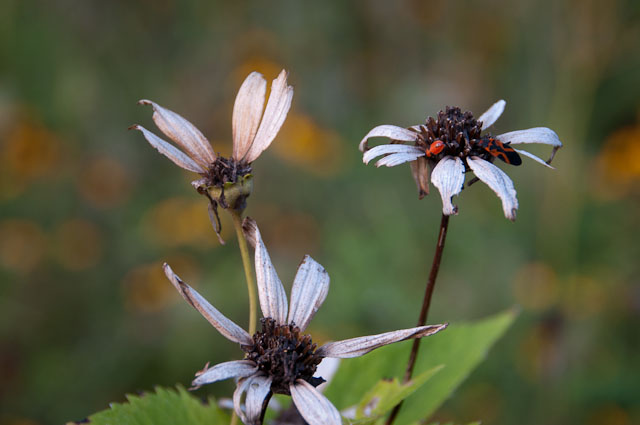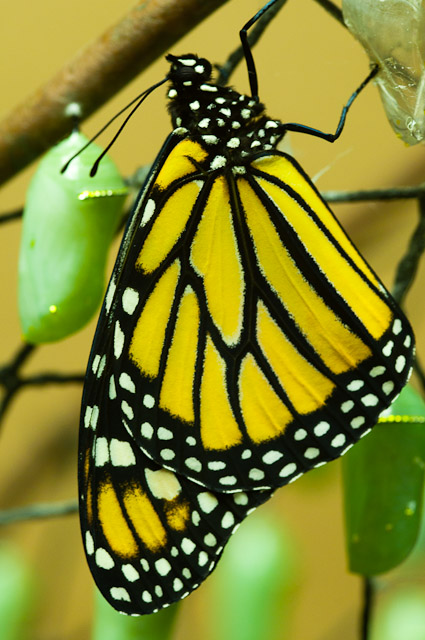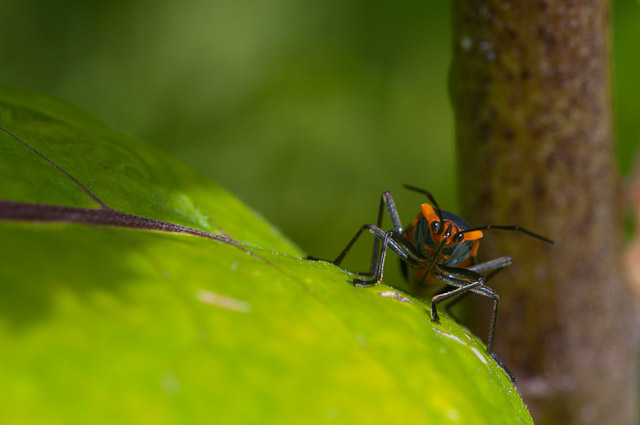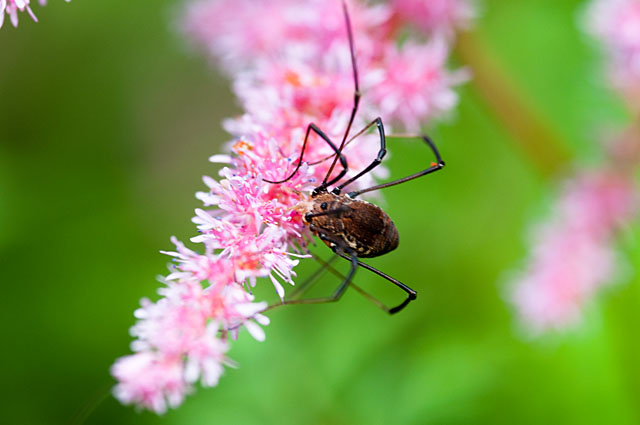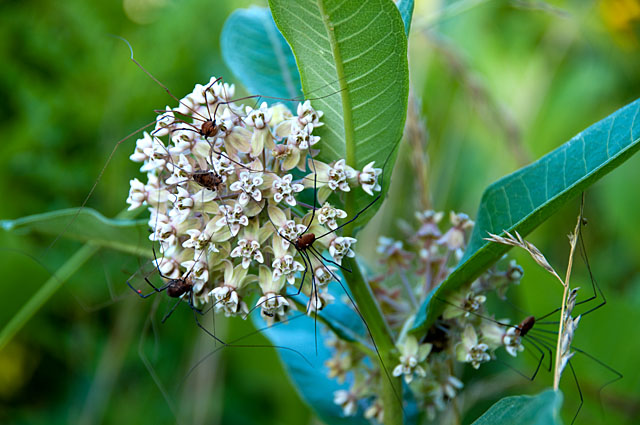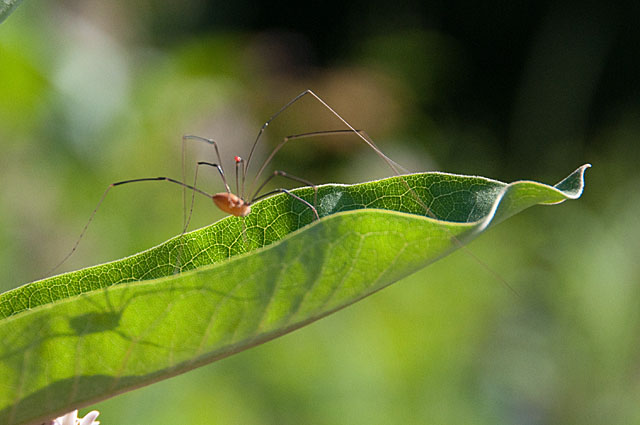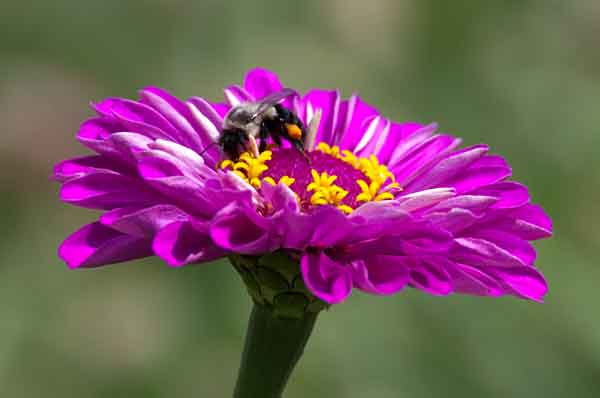I’m sitting in my hotel room in New Orleans. I was not myself yesterday and did not feel all that well, so I was really tired when we arrived at our hotel last night. After a much needed night of sleep, I awoke to overcast skies, some light rain and 87% humidity. This Colorado boy is not use to having his clothes stick to his body. I enjoyed a quick breakfast and decided to log on my laptop. I haven’t check any blogs for a couple days now and will try and do that next. It may be overwhelming and take a while. We get back home at midnight then I’m back out again tomorrow at 1:00 pm. Ever notice how work seems to keep getting in the way of things?
-
-
Monarch Butterfly
Yesterday I mentioned I’d found an interesting dark red mushroom but did not know what it was, so I stopped at the visitor center at Blendon Woods Metro Park to ask someone if they could identify it. I got my answer, plus some wonderful facts about monarch butterflies I didn’t know about (or I’d forgotten).
On the counter in the visitor’s center were two stands with monarch butterflies in different stages of their life cycle. I had never seen anything like it so I became the fascinated child and started asking questions. The two women were excited to share as much information as they could with me. One of the women would go in search for the eggs, finding them under milkweed leaves. She would then bring these tiny eggs back to the visitor center in hopes children could learn and watch them.
The eggs are creamy white and later turn pale yellow. They are elongate and subconical, with approximately 23 longitudinal ridges and many fine traverse lines. The caterpillar is banded with yellow, black, and white stripes. The head is also striped with yellow and black. There are two pairs of black filaments, one pair on each end of the body. The chrysalis is blue-green with a band of black and gold on the end of the abdomen. There are other gold spots on the thorax, the wing bases, and the eyes. This monarch has just emerged from it’s chrysalis and is drying its wings. In the background you can see on of the green chrysalis.
-
Missed Opportunities
I think most of my missed opportunities, and this includes all areas of my life, are because I fail to be there, to take the necessary steps to be there. If I had not picked up my camera and tripod then headed to Blendon Woods Metro Park, I would not have had the opportunity to meet this milkweed bug face-to-face. Nor, would he/she have had the opportunity to meet me. 🙂 If you look close enough I thin there is a smile on their face. I did not plan our encounter but was actually searching for raindrops on leaves or flowers after a hard rain we’d just had. And, once I’d experienced this moment I needed to know something about them, so I googled milkweed bugs. I discovered an interesting little character. Yep, I need to place myself in more places so I do not miss any more opportunities.
And, in case you need to know a milkweed bug, Oncopeltus fasciatus, is a very large–sized hemipteran of the family Lygaeidae. And, believe it or not, they feed on milkweed plant juices, seeds and occasionally on other plant juices.
-
Images that move us…
Who needs an expensive DSLR camera, three lens, eight camera bags, three filters, and a carbon tripod? 🙂 Why not pull the cell phone out of our pocket, take the photo, tweak it a bit in the iphone PS app, upload it to your blog and viola, the days post is done.
Yes, I’ve done that because I’m a photographer and when a scene presents itself we need to take the photo. This may work in a pinch but there is something about the process involved in working a scene that the above scenario falls short. I’m only talking for myself but I need the experience of looking through the viewfinder, envisioning, composing, waiting and then pressing the shutter. A photographer takes photos because they have to, just as writers write. We work through our process to create the images that move us.
-
Group Meeting
This is another from my Sunday morning outing in Blendon Woods Park. In many backyards the most conspicuous “spider” isn’t a spider at all, but rather something related to the spiders, as are scorpions, ticks, mites, centipedes and millipedes.I believe these Daddy-longlegs are really called the Harvestman. There are, amazingly over 6,400 species of these harvestman. Many species are omnivorous, eating primarily small insects and all kinds of plant material and fungi; some are scavengers, feeding upon dead organisms, bird dung and other fecal material. Yuck!
-
After the Rain
After a night of rain and lightening the sun popped out around 9:00 in the morning, so off to Blendon Woods park I went. I needed the time at the park as I only had the one day off before heading out for another 4-day trip. When you read this I will be somewhere up there flying around. I had an enjoyable time and found a few things to place in my view finder, such as this Daddy Longlegs.
-
Pollinating My Photography
I know this image is not very good but I decided to post it anyway. It is heavily cropped, grainy and not very sharp. So, why post a dud? Because it also reminds me of why I get out to shoot just as much as one of my better images. Paul Lester mentions why he presses the shutter in one of his blogs. He states, “Sometimes I don’t know why I click the shutter, but I just have to. And when that feeling hits, nothing but the click will do.” Man can I relate. I shoot and post images because of the change that occurs in me when I press the shutter. Words like therapy, healing, rejuvenation, quiet time, beauty, getting in touch with nature, getting away from the hustle of city life and pollination. Pollination? Yes, pollination.
Wikipedia defines biotic pollination as the process by which pollen is transferred in plants, thereby enabling fertilization and sexual reproduction. This process of pollination requires pollinators: organisms that carry or move the pollen grains from the anther to the receptive part of the carpel or pistil. Okay, so what does that mean to me?
The birth and growth of my photography is similar to biotic pollination. The pollinators are the scenes found in my viewfinder. When each one of those scenes touches me, I grow as a person, as a photographer. Each time I venture out a scene enticing me to press the shutter will present itself. So, I’m being fertilized by scenes around me.
